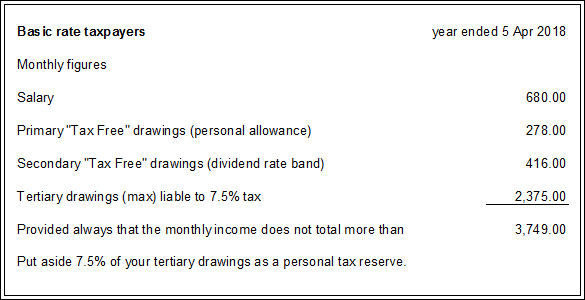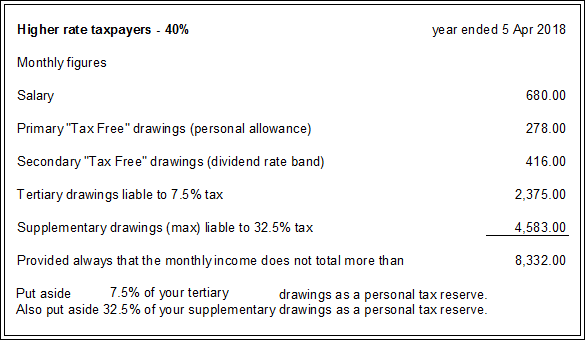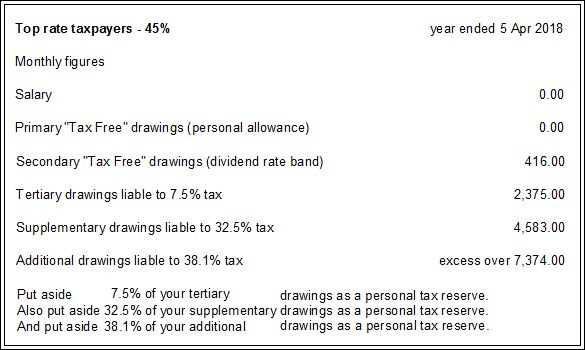Since the introduction of the Dividend Allowance and the Interest Allowance in 2016, compounded by the new Scottish rates of tax in 2017, there is no easy way to work out the optimum pattern of salary and dividends for directors of small UK companies.
Here’s a rough guide to what you might want to pay yourself and what sort of personal income tax reserve you may need to keep. Remember, that this is in addition to your company preparing its own corporation tax reserve. A company can only pay dividends from the company’s post tax profit. If you have no profit then you can pay no dividends.
In order to benefit from this working practice you must follow the system precisely. Failure to do so may lead to a (later) deduction of PAYE from your income and possibly a charge to interest and penalties if HMRC determine that any tax and National Insurance is being paid late.
- You must be a director of a UK limited company.
- Your salary is paid to you for the responsibility involved in holding the office of director and not for “work done”.
- You must also be a shareholder in the company.
- All shareholders must receive dividends in direct proportion to their shareholding.
- Beware of adverse consequences if you decide to take 100% of the dividend when you are not the 100% shareholder.
Other than salary, describe these amounts as “drawings” until the overall tax picture for the year is clear and the exact “dividend” can be calculated.
Bank transfers
Separate bank transfers are required in order to distinguish salary from drawings. It also makes life easier if you use separate bank transfers for primary, secondary (etc) drawings.
Basic rate taxpayers
For people whose monthly income does not exceed 3,749.

Higher rate taxpayers
For people who need (and can afford) monthly incomes between 3,749 and 8,332.

Top rate taxpayers
For people who need (and can afford) monthly incomes in excess of 8,332.
There are graduated changes for annual incomes between 100,000 and 150,000 and the 45% rate of income tax also kicks in.

Tax Planning
In all cases, and especially in relation to that last table, we can provide an accurate tax forecasting service which fine tunes the optimum level of dividend to suit your income level, your savings, marital status, child benefit position and your country. It’s a premium service detailed on our prices page.
Let us know if we can help.
